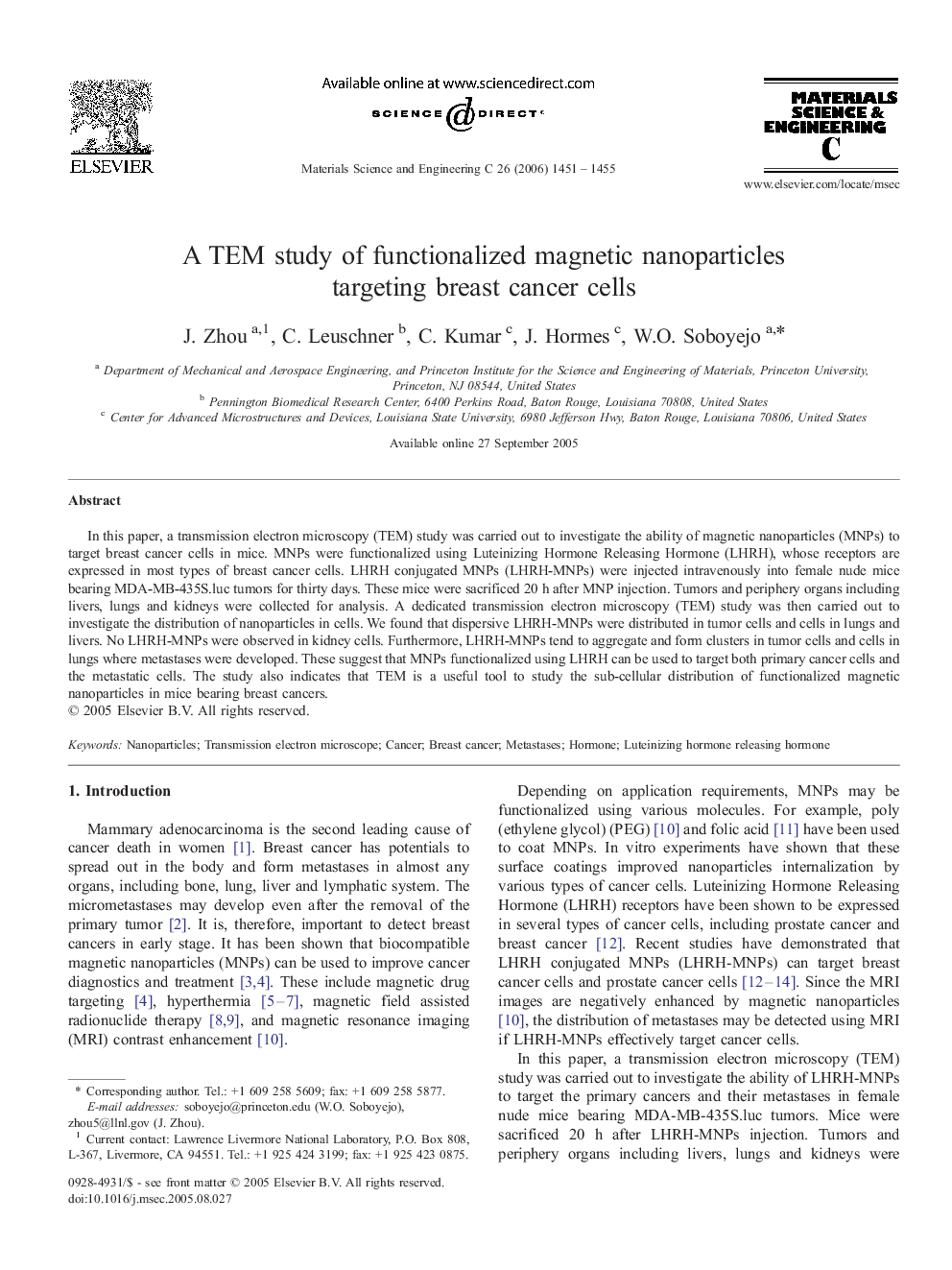| کد مقاله | کد نشریه | سال انتشار | مقاله انگلیسی | نسخه تمام متن |
|---|---|---|---|---|
| 1431165 | 987221 | 2006 | 5 صفحه PDF | دانلود رایگان |

In this paper, a transmission electron microscopy (TEM) study was carried out to investigate the ability of magnetic nanoparticles (MNPs) to target breast cancer cells in mice. MNPs were functionalized using Luteinizing Hormone Releasing Hormone (LHRH), whose receptors are expressed in most types of breast cancer cells. LHRH conjugated MNPs (LHRH-MNPs) were injected intravenously into female nude mice bearing MDA-MB-435S.luc tumors for thirty days. These mice were sacrificed 20 h after MNP injection. Tumors and periphery organs including livers, lungs and kidneys were collected for analysis. A dedicated transmission electron microscopy (TEM) study was then carried out to investigate the distribution of nanoparticles in cells. We found that dispersive LHRH-MNPs were distributed in tumor cells and cells in lungs and livers. No LHRH-MNPs were observed in kidney cells. Furthermore, LHRH-MNPs tend to aggregate and form clusters in tumor cells and cells in lungs where metastases were developed. These suggest that MNPs functionalized using LHRH can be used to target both primary cancer cells and the metastatic cells. The study also indicates that TEM is a useful tool to study the sub-cellular distribution of functionalized magnetic nanoparticles in mice bearing breast cancers.
Journal: Materials Science and Engineering: C - Volume 26, Issue 8, September 2006, Pages 1451–1455